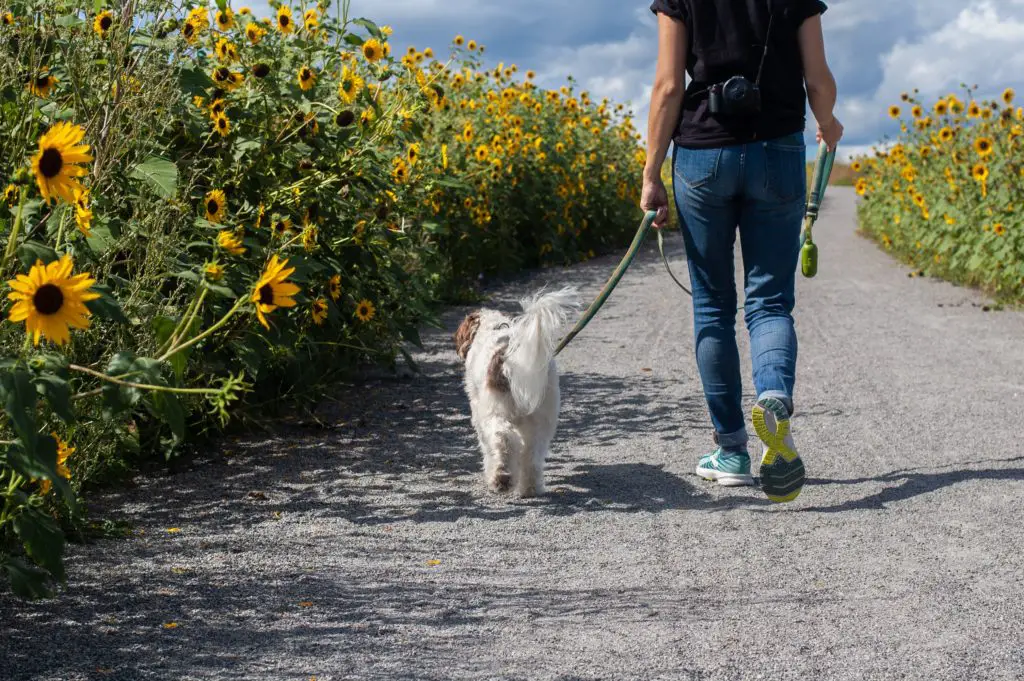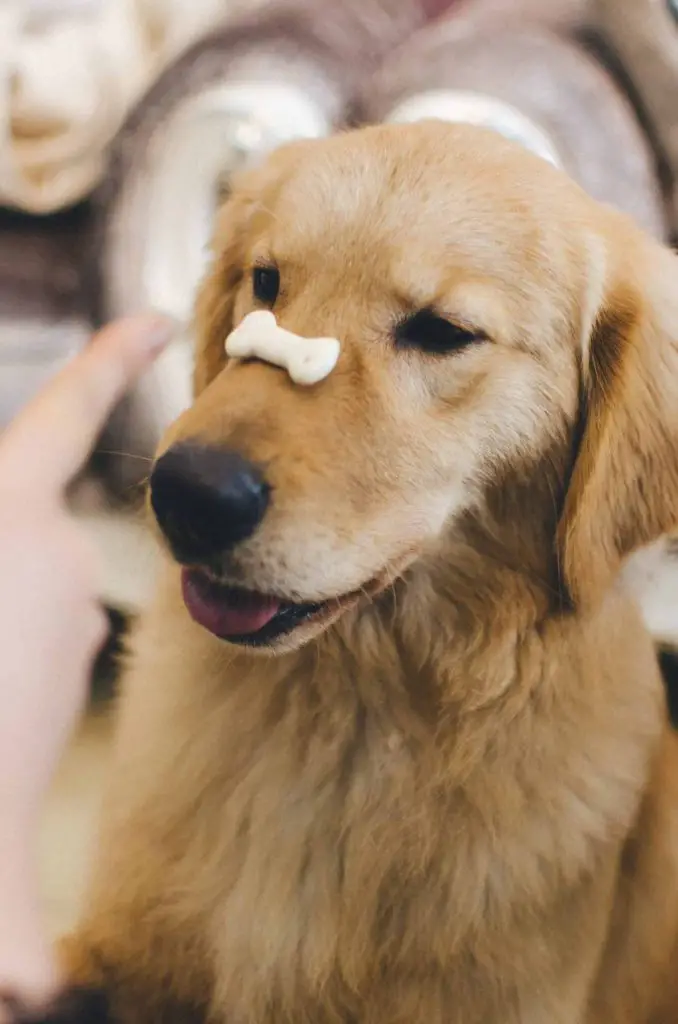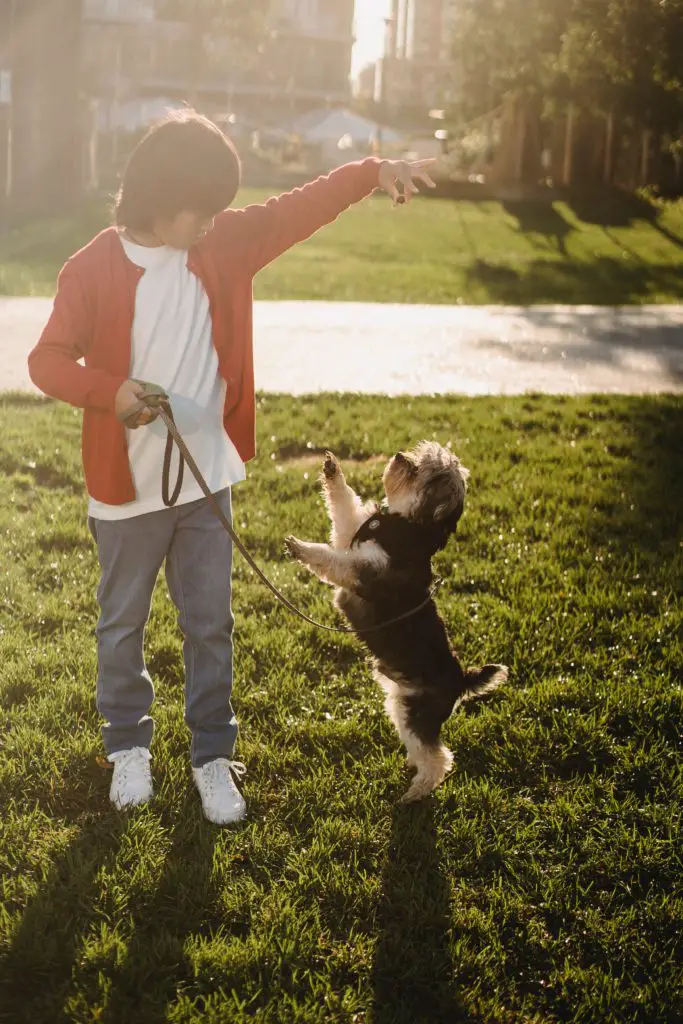Training a dog is a challenge due to the fact that canines and humans communicate using a different language. Before you set expectations and goals for you and your new dog, it is wise to establish how you will teach them to have good manners and adjust to your lifestyle.
The Top 5 Basic Dog Training Commands will get you and your new dog off to a wonderful beginning. The greatest gifts you can give your dog are time, patience, and training. Training your dog is an investment that will keep paying you back for years to come.
Related Articles:
- How to Train a Deaf Dog to Stop Barking
- How to Train Your Dog with Positive Reinforcement
- How to Crate Train a Dog
- How to Train Your Dog to Walk on a Leash
- How to Train Your Dog to be Social
Basic Dog Training Commands: Who, What, When and How
For a moment you are probably wondering if you stumbled across an English lesson or dog training lesson. Actually, you would be right, it is indeed both!
Your dog will be learning your language and how to respond to it. These function words, who, what, when, and how are valuable when getting you started with teaching basic dog training commands.
Who: You & Your Dog
It’s important that you commit to teaching your new dog basic dog training commands. Some commands will be taught less formally as they are incorporated throughout your day. Basic commands like “leave it” will need several minutes a day dedicated to teaching your dog the meaning of these specific words.
Related Articles:
- How to Get a Picky Dog to Eat
- How to Stop Your Dog from Peeing When Excited
- How to Keep Your House from Smelling like Dog
- How to Measure a Dog for a Harness
What: 5 Top Basic Dog Training Commands
A well-mannered dog will need to know the following basic dog training commands: Sit, Down, Stay, Come, and Heel (walking nicely on leash). Details with steps on how to teach them will be covered in this article.
When: Several Times a Day
The best time to teach your canine basic dog training commands is in a familiar environment. Ideally, you would like your dog to be relaxed and focused on you.
- Keep it short. Dog training could be done in less than a minute several times a day.
It is best to teach your dog a new skill in an environment with fewer distractions. As your dog becomes more confident with that skill you can gradually add in more distractions.
Training your dog basic dog training commands will become part of your lifestyle for the first couple of years. Commands can be practiced when you are preparing a meal in the kitchen or out on your daily walks. At the same time, some commands will need dedicated training time set aside for such.
Related Articles:
- How to Get the Attention of a Deaf Dog
- How to Train a Deaf Dog to Sit and Stay
- How to Train a Deaf Dog with Hand Signals
- How to Potty Train a Deaf Dog
How: Training Steps
Steps on how to accomplish teaching the top 5 basic dog training commands will be given in more detail. Dog trainers from all over the world each have their own version of how to teach the basic dog training commands. In this article we will emphasize the positive reinforcement approach to training.
Before You Begin: Two Important Skills
Two basic skills to teach your new dog are recognizing their name and giving you eye contact. Whether you brought a new puppy home or gave an adopted dog a new name, it’s vitally important the dog knows their name.
Teach them their name, by saying the dog’s name. When they look at you, praise and treat your dog. Repeat until they are solid that when their name is used it means you want their attention. Be careful not to fall into the trap of misusing your dog’s name by saying it with no purpose or as a reprimand.
Before you jump into teaching basic dog training commands establish eye contact with your dog. When your dog is focused on you, they are thinking about you and want to know what is next from you!

Top 5 Basic Dog Training Commands
As your dog learns the new commands, be sure to praise and treat the correct behavior. No words are needed when they do the command incorrectly.
High value treats speak loudly to a dog; offer them a small piece of tasty, cooked chicken or a fragrant treat intended for training purposes.
- Remember to keep your training session brief, especially when you first begin working with your dog.
Related Articles:
Basic Dog Training Commands #1: SIT
Here are two different ways you can practice this command with your dog:
First, get your dog’s attention.
- Stand or kneel in front of your dog. After getting eye contact take a tasty treat and hold it above their head.
- When your dog sits give him a treat. (Do not use the word SIT yet.)
- Repeat.
- Take a step backwards to encourage your dog to stand and then wait for the sit.
- Treat the sit.
- After several repetitions, name the behavior, SIT just as they begin to sit, and treat them.
Once they begin associating the word with the behavior, you can use it throughout their day. Ask for a sit before they go outside or sit while you attach the leash, sit before going through the door and so forth.
The second method is done at feeding times.
- Slowly move the dog’s food dish (with food in it) above their heads.
- Your dog will more than likely sit as they lift their head to view the dish.
- As their bottom sets down on the floor, name the position, SIT. And feed them.
- Repeat two to three times a day, depending on how many times you feed your dog.
Your dog will eventually associate feeding times with a sit. They will sit politely while you put down their dish to eat for years to come.
Related Articles:
- A Review of the Top 5 Best Dog Bones For Aggressive Chewers
- How to Get a Picky Dog to Eat
- A Review Of The Top 5 Best Bone Broths for Dogs
- How to Keep Your House from Smelling like Dog

Basic Dog Training Commands #2: DOWN
Owners can use the word DOWN or LIE DOWN, just be consistent with whichever word(s) you decide to use.
When possible, work on this behavior after your dog has used up some of their energy, especially if you are working with a puppy. Use small, tasty treats for rewarding your dog as they learn.
- Start with your dog in the standing or sitting position. Establish eye contact with your dog.
- Once you have their attention, hold a treat in your hand and begin to lower your hand slowly. Move the treat close to their chest as you bring it down between their paws.
- Remember to not say the word DOWN yet.
- Your dog will bring their head down first and eventually their backside will follow.
- Allow your dog to lick or even nibble at the treat without giving it to them, as your dog’s head goes down between their front legs/knees.
- As soon as your dog is in the down position, treat immediately.
- Repeat.
- Once your dog has repeated the motion successfully, you can name the position with DOWN and a treat.
- To reinforce, when your dog is in the down position, repeat the word and treat between their paws. And again, repeat the word and treat.
Down is a command that can be practiced throughout your day, taking less than one minute at time. Eventually this command can be used to settle a dog, to keep them from advancing after something undesirable, or even used while you are talking.
Related Articles:
- A Review Of The Top 5 Best Dog Whistles
- A Review of the 5 Best Dog Muzzles
- A Review Of The Top 5 Best Dog Clickers
- How to Build an Outdoor Dog Potty Area on Concrete
Basic Dog Training Commands #3: STAY
Stay is considered a duration behavior as well as one of the basic dog training commands. The end goal of teaching the command STAY is that your dog will keep this position until you give them a release word to get up.
- Decide on a release word. Choose a word such as “all done”, “go” or “free”. You can use this release word for the commands SIT and DOWN as well.
- Put your dog in a sit or stand position. Say your release word as you toss a treat on the floor away from you and dog. As they move to get the treat, emphasize the word again.
- Repeat this drill several times. You want to be able to say the word first and then toss the treat AFTER your dog begins to move. This teaches the dog that the release word means to move.
- Now ask your dog for a sit. Pause a few seconds. If they keep the sit, treat and release.
- Repeat. Sit, pause, treat for staying in a sit, then release your dog.
- Practice daily. You want to gradually increase the time you pause between treats and release. You can emphasis the position by saying STAY.
- If your dog moves before the release word, you need to shorten your pauses. Move slowly while asking for a Stay.
- Eventually once your dog can stay in a sit or down for several seconds, you can begin stepping away from them one step at a time.
Practice the Stay command while you are looking at your dog and eventually turn your back and take a few steps. This is a wonderful mental exercise for your dog. It is also a calming exercise that can be practiced daily.
Related Articles:
- A Review Of The Top 5 Best Salmon Oils for Dogs
- The Best Canned Dog Food for Dogs with Sensitive Stomachs
- How to Cook Liver for Dogs
- A Review of the 5 Best High Fiber Dog Foods For Anal Gland Problems
Basic Dog Training Commands #4: COME
Another word that is often used for the come command is a recall. This command is very important for both you and your dog. It teaches them to be aware of you and that no matter what might be distracting them, they need to come to your side.
We will teach COME in the form of a game.
- Begin with your dog on a 4-6 foot leash. You will want two treats in your hand. Show your dog the treat.
- Gently toss one treat one body length (your dogs) away. As your dog moves to eat it, call them back with their name and say COME.
- Take a small step backwards to encourage your dog to move towards you. Treat your dog.
- Repeat. Your dog will quickly understand this game, so increase the distance of gently tossing the treat out.
- Eventually you can toss the treat the distance of the leash. They eat the treat as you say COME.
- If your dog gets distracted and the game is interrupted, stop. Get your dog’s attention and begin with tossing the treat a short distance.
- Practice playing the COME game several times a day. Eventually you won’t need to toss a treat out.
- Remember to only give the COME command when you are sure you can reinforce it. Using a longer line will increase the fun and reliability for greater distances.
Tip: Add in distractions while your dog is learning the COME command and is still attached to a long line. Some dogs like to COME for a toy reward instead of a treat. The goal is to have your dog come rushing back to your side when you issue the COME command. Practice daily.
Related Articles:
- How to Treat a Dog Ear Infection at Home without a Vet
- How to Play with Your Dog
- Rules of How to Walk Your Dog
- Tips for First Time Dog Owners

Basic Dog Training Commands #5: HEEL
The definition of a HEEL command is your dog walking with a loose leash, while positioned on your left side with their head even with your knee.
Another acceptable term for heeling, especially with new dogs is “walking nicely on a leash”. This means the dog is walking on one side of you politely without pulling on the leash.
You can decide what expectations and goals you have for your dog.
- Your dog should be wearing a collar and comfortable with a leash being attached to the collar.
- Stand with your dog, also standing with the leash in a loose loop. Treat your dog for standing next to your leg (preferably on your left.)
- Begin by taking a small step forward treat your dog for taking a step with you.
- Repeat with slow small steps. Treat your dog at the level of your knee as you walk forward.
- If your dog gets ahead of you simply turn in the opposite direction. Say their name and treat when they are by your side.
- Repeat. Remember to walk slowly. Treat only for the position you want your dog in.
Practice tips: Heeling can be practiced in your home by walking from chair to chair or set up cones in your living space. Eventually you can walk around a chair or cone and add in distractions.
Teaching these five basic dog training commands is a good beginning for you and your dog. Training our dogs to be well mannered and polite is rewarding. Remember to keep your training sessions short, praise, treat when appropriate, and make the training fun!
Relevant Articles:
- Ultimate Guide: How To Take Care Of A Puppy
- Ultimate Guide: How To Take Care Of A Dog
- Ultimate Guide: How To Take Care Of A Senior Dog
- The Benefits of Owning a Dog
- Top 12 Tips for First Time Dog Owners
- How to Train a Dog
Please read our Legal Disclaimer


